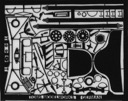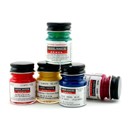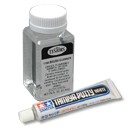

Fokker D.VII (Fok) - Early
Unassembled plastic model kit with photo-etch parts.
Don't forget building supplies!
DISCONTINUED This product has been discontinued
and is no longer available.List price: $136.25
You pay: $103.99
(All prices in U.S. Dollars)
Manufacturer: Wingnut Wings
Stock Number: WNW 32067
Scale: 1/32
View all products of type "Fokker D.VII"
and is no longer available.List price: $136.25
You pay: $103.99
(All prices in U.S. Dollars)
Manufacturer: Wingnut Wings
Stock Number: WNW 32067
Scale: 1/32
View all products of type "Fokker D.VII"
This model kit requires assembly. Cement, paint and other construction materials not included unless specifically stated in the description.
Features:
In keeping with previous Fokker design practices the D.VII featured a welded steel tube fuselage and tailplane along with thick 'high lift' wings of conventional wood and wire construction. A few early production machines were powered by the 180hp Daimler-Mercedes D.IIIa but most production aircraft were fitted with the 200hp D.IIIau, although a small number received the new BMW IIIa (rated at 230hp by the British) 'altitude' engine. Interestingly, although only shown in a handful of known photos, some late production Fokker D.VII were powered by the long outclassed 160hp Daimler-Mercedes D.III engine. Initially supplied in small number to the most experienced pilots of the elite Jagdgeschwader 1 from late April 1918 the Fokker D.VII quickly started to make a name for itself and allied pilots suddenly found that they could no longer count on their superior performance at higher altitudes. In the middle of 1918 the Fokker D.VII was plagued with a series of often fatal mid-air fires variously attributed to overheating, fuel tank stress damage and the volatile incendiary ammunition used for 'balloon busting'. An immediate response to this was removing the top cowlings for improved cooling followed by modified side cowlings with louvres to ventilate the engine bay more efficiently. By the end of the Great War the Fokker D.VII was the main aircraft type equipping the German Jastas and despite the Daimler-Mercedes powered D.VII being very well received, it was the Fokker D.VII fitted with the coveted BMWIIIa 'altitude' engine that all Jasta pilots longed to fly. Towards the end of the war a number of D.VII were ordered for the Austro-Hungarian Luftfahrtruppe to be built by Fokker (225), Aviatik (255) and MAG (150). Following the Armistice the Fokker D.VII found its way into numerous countries air forces including Argentina, Belgium, Bulgaria, Czechoslovakia, Denmark, Finland, Hungary, Netherlands, Lithuania, Poland, Romania, Soviet Union, Sweden, Switzerland and the American USAS and USMC.
WW1 colour schemes are contentious at the best of times and we have done our best to provide what we consider to be accurate painting information for this model. The colourful unit and personal markings applied to the various German fighters of the Great War have attracted more than their fair share of debate over the years and, while we have been as meticulous as we could be, I'm sure some will not find our choices to their liking. On Fokker built D.VII the fuselage framework and other welded metal components appear to have been painted light grey or light grey-green but often the front 3 cabane struts were painted in the same dark green as the cowlings. Approximately the first 150 Fokker built D.VII had their fuselage and tailplane fabric covering stained with a streaked green and brown strie finish. Some of these very early aircraft also appear to have had the pale "lower" lozenge fabric also used on the upper surfaces of the wings, with the bottom surfaces apparently overpainted light blue. Nevertheless, most Fokker built D.VII were conventionally covered with 4 and 5 colour upper and lower lozenge fabric with rib tapes cut from the same material. Later production Fokker built D.VII had their fuselage, fin and elevators covered with 4 and 5 colour lozenge fabric as well. It appears that in many cases the lozenge material was given a brown tinted dope 'glaze' to tone down the vibrant printed colours. Additionally many colourful unit and personal markings were applied in Jasta service, all of which remain amongst the liveliest of topics for modellers to debate.
- Very simple rigging
- 4 high quality Cartograf decal sheets including fitted 'Fokker streaky camouflage', 4 & 5 colour lozenge and markings for 5 early production aircraft
- 210 high quality injection moulded plastic parts including 19 parts exclusive to Fokker built aircraft
- Plastic parts are the same as 32011 Fokker D.VII (Fok)
- 8 photo-etched metal detail parts
- Optional cowlings, propellers, low & mid height gun mounts, cockpit coamings, windscreens, low & high exhausts and 180hp & 200hp Daimler-Mercedes engines
- Fine in scale rib tape detail
- Full rigging diagrams
In keeping with previous Fokker design practices the D.VII featured a welded steel tube fuselage and tailplane along with thick 'high lift' wings of conventional wood and wire construction. A few early production machines were powered by the 180hp Daimler-Mercedes D.IIIa but most production aircraft were fitted with the 200hp D.IIIau, although a small number received the new BMW IIIa (rated at 230hp by the British) 'altitude' engine. Interestingly, although only shown in a handful of known photos, some late production Fokker D.VII were powered by the long outclassed 160hp Daimler-Mercedes D.III engine. Initially supplied in small number to the most experienced pilots of the elite Jagdgeschwader 1 from late April 1918 the Fokker D.VII quickly started to make a name for itself and allied pilots suddenly found that they could no longer count on their superior performance at higher altitudes. In the middle of 1918 the Fokker D.VII was plagued with a series of often fatal mid-air fires variously attributed to overheating, fuel tank stress damage and the volatile incendiary ammunition used for 'balloon busting'. An immediate response to this was removing the top cowlings for improved cooling followed by modified side cowlings with louvres to ventilate the engine bay more efficiently. By the end of the Great War the Fokker D.VII was the main aircraft type equipping the German Jastas and despite the Daimler-Mercedes powered D.VII being very well received, it was the Fokker D.VII fitted with the coveted BMWIIIa 'altitude' engine that all Jasta pilots longed to fly. Towards the end of the war a number of D.VII were ordered for the Austro-Hungarian Luftfahrtruppe to be built by Fokker (225), Aviatik (255) and MAG (150). Following the Armistice the Fokker D.VII found its way into numerous countries air forces including Argentina, Belgium, Bulgaria, Czechoslovakia, Denmark, Finland, Hungary, Netherlands, Lithuania, Poland, Romania, Soviet Union, Sweden, Switzerland and the American USAS and USMC.
WW1 colour schemes are contentious at the best of times and we have done our best to provide what we consider to be accurate painting information for this model. The colourful unit and personal markings applied to the various German fighters of the Great War have attracted more than their fair share of debate over the years and, while we have been as meticulous as we could be, I'm sure some will not find our choices to their liking. On Fokker built D.VII the fuselage framework and other welded metal components appear to have been painted light grey or light grey-green but often the front 3 cabane struts were painted in the same dark green as the cowlings. Approximately the first 150 Fokker built D.VII had their fuselage and tailplane fabric covering stained with a streaked green and brown strie finish. Some of these very early aircraft also appear to have had the pale "lower" lozenge fabric also used on the upper surfaces of the wings, with the bottom surfaces apparently overpainted light blue. Nevertheless, most Fokker built D.VII were conventionally covered with 4 and 5 colour upper and lower lozenge fabric with rib tapes cut from the same material. Later production Fokker built D.VII had their fuselage, fin and elevators covered with 4 and 5 colour lozenge fabric as well. It appears that in many cases the lozenge material was given a brown tinted dope 'glaze' to tone down the vibrant printed colours. Additionally many colourful unit and personal markings were applied in Jasta service, all of which remain amongst the liveliest of topics for modellers to debate.

Copyright © 2005-2024 Scale Hobbyist, all rights reserved

























